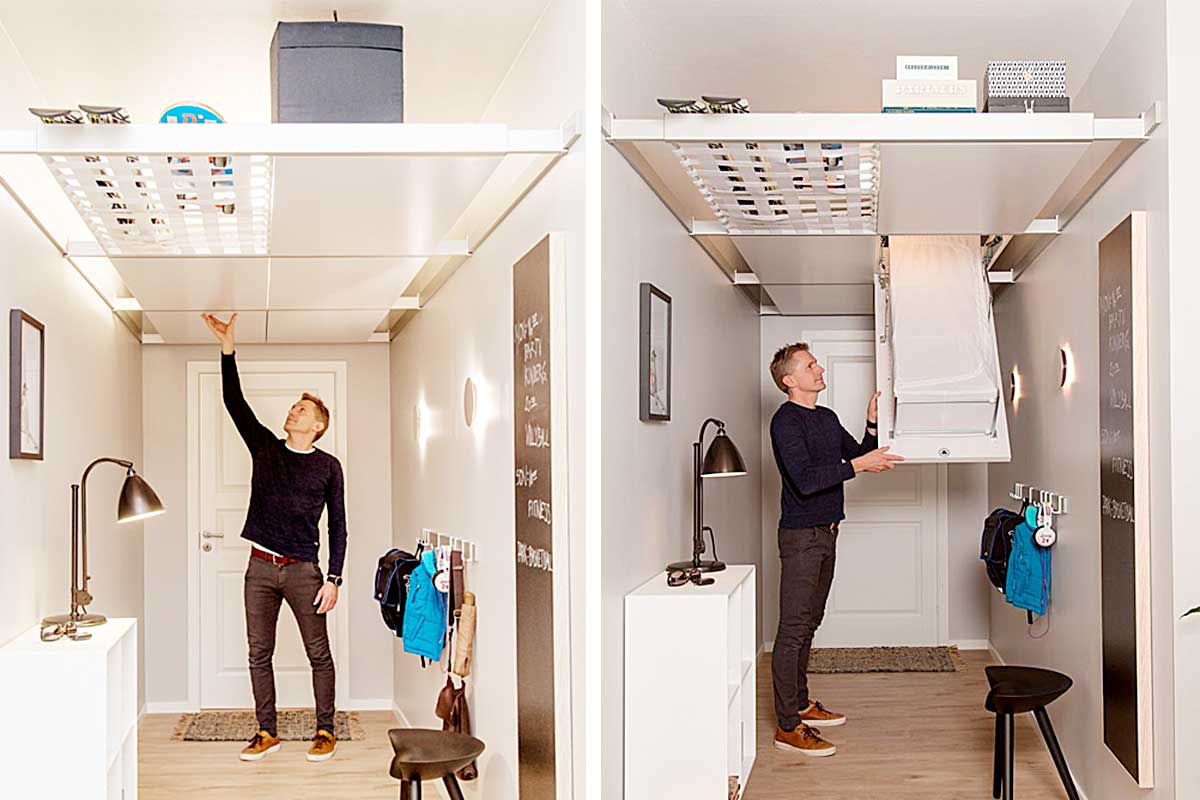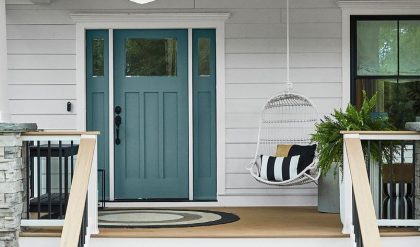
Maximize Your Space: Smart Storage Solutions for Small Homes
Living large in a small space? It’s entirely possible! The key lies not in sacrificing your belongings, but in mastering the art of smart storage. Forget cramped closets and overflowing drawers; we’re diving into innovative and creative solutions that transform your small home from cluttered to comfortable. This isn’t about minimalism (though that works too!), it’s about maximizing every inch with style and functionality.
Beyond the Obvious: Rethinking Traditional Storage
Let’s face it, the standard built-in wardrobe and under-bed boxes only scratch the surface. To truly optimize your space, you need to think outside the box (pun intended!).
Verticality is Your New Best Friend
Small spaces crave height. Think tall, narrow bookshelves instead of bulky ones. Utilize wall space with floating shelves for display and storage. Consider a loft bed to free up valuable floor space underneath, perfect for a desk, storage chests, or even a cozy reading nook.
Embrace the Power of Multifunctional Furniture
Ottoman storage, coffee tables with hidden compartments, bed frames with integrated drawers – these are your secret weapons. Investing in furniture that serves multiple purposes is a game-changer. A sofa bed? Instant guest room and seating solution.
Hidden Storage Havens
Don’t neglect those often-overlooked areas. Stair risers, window seats, and even the space behind doors can become valuable storage zones. Custom-built drawers in stair risers, for example, are surprisingly spacious. Utilize slim, rolling storage units that fit snugly in narrow hallways or between furniture pieces.
Creative Storage Solutions: Think Outside the Box (Literally!)
Beyond the practical, let’s explore the imaginative:
- Repurposed Items: Vintage suitcases as coffee tables, decorative baskets for blankets, old ladders as shelving units – unleash your creativity!
- Wall-Mounted Organizers: These are perfect for maximizing vertical space, especially in kitchens and bathrooms. Spice racks, magnetic knife strips, and over-the-door organizers dramatically improve accessibility and reduce clutter.
- Clear Containers: While aesthetically pleasing, they also allow you to easily see what’s inside, minimizing the “I forgot I had that!” moments.
Smart Storage by Room: Tailored Solutions
Let’s break down room-specific strategies:
The Kitchen: A Culinary Conundrum Solved
- Maximize Cabinet Space: Use drawer dividers, shelf risers, and corner organizers to utilize every inch.
- Wall-Mounted Storage: Hang pots, pans, and utensils to free up counter space.
- Under-Sink Organization: Utilize tiered organizers to neatly store cleaning supplies.
The Bedroom: A Sanctuary of Calm
- Under-Bed Storage: Invest in vacuum-sealed bags for seasonal clothes and bedding.
- Vertical Space: Utilize wall-mounted shelves for books, plants, or decorative items.
- Over-the-Door Organizers: Perfect for shoes, accessories, and toiletries.
The Bathroom: A Space-Saving Oasis
- Over-the-Toilet Storage: Utilize the often-wasted space above the toilet with a shelving unit.
- Shower Caddies: Keep shampoos, conditioners, and soaps organized.
- Floating Shelves: Ideal for storing towels, toiletries, and other essentials.
Table: Smart Storage Solutions at a Glance
| Area | Solution | Benefit |
|---|---|---|
| Kitchen | Drawer dividers | Maximizes drawer space |
| Bedroom | Under-bed storage containers | Increases storage capacity |
| Bathroom | Over-the-toilet shelf | Uses vertical space efficiently |
| Living Room | Multifunctional coffee table | Combines storage and seating |
| Entryway | Wall-mounted coat hooks | Keeps coats and bags organized |
Conclusion: Embrace the Art of Small Space Living
Living in a small home doesn’t mean sacrificing comfort or style. By embracing innovative storage solutions and adopting a mindful approach to organization, you can create a beautiful and functional living space that truly reflects your personality. Remember, it’s not about how much space you have, but how effectively you use it.

Additional Information
Maximizing Space in Small Homes: A Deeper Dive into Smart Storage Solutions
The challenge of maximizing space in small homes transcends mere aesthetics; it profoundly impacts functionality, mental well-being, and even property value. While the initial concept of “smart storage solutions” might evoke images of sleek, minimalist shelving, a truly effective approach requires a multifaceted analysis encompassing spatial psychology, ergonomic principles, and a deep understanding of individual needs and lifestyles. This deeper dive explores these facets, offering a more comprehensive understanding beyond the surface-level suggestions often found in introductory articles.
I. Beyond the Visual: Understanding Spatial Psychology and Functionality:
Simply adding storage units isn’t sufficient; their placement and design significantly impact how a space feels and functions. Research in environmental psychology demonstrates the strong link between cluttered environments and increased stress levels. Smart storage, therefore, must address not only the quantity of storage but also its accessibility and its contribution to a sense of order and calm.
-
Strategic Verticality: Utilizing vertical space effectively is paramount. Instead of low, sprawling cabinets, consider tall, slender units reaching the ceiling. This maximizes storage capacity without visually overwhelming the room. This approach is particularly effective in smaller rooms such as hallways or bathrooms, where traditional storage might disrupt flow.
-
Hidden Storage Solutions: Incorporating hidden storage – like ottomans with built-in compartments, beds with drawers, or wall-mounted fold-down desks – maintains a clean, uncluttered appearance while providing ample storage. This principle leverages the power of visual decluttering to enhance the perceived spaciousness of a room, even if the storage capacity is not drastically increased compared to open shelving.
-
Zoning and Flow: Consider the flow of movement within the home. Storage should be strategically positioned to minimize unnecessary steps and to support the daily routines of the occupants. For example, placing everyday items within easy reach in the kitchen or bathroom improves efficiency and reduces stress. A case study analyzing the time spent retrieving items in differently organized kitchens revealed a significant reduction (up to 20%) in time spent on daily tasks when storage was strategically organized based on frequency of use. (Source: Need a citation for a relevant kitchen study)
II. Ergonomic Considerations and Accessibility:
Effective storage must be accessible. Simply placing items out of sight doesn’t equal smart storage if retrieving them requires excessive effort or compromises safety.
-
Reach and Height: Design storage solutions based on the height and reach of the occupants. Frequently used items should be easily accessible, avoiding the need to use ladders or stretch excessively.
-
Weight and Size: Consider the weight of stored items and the strength of the storage unit. Overloading shelves or using poorly constructed units can lead to injury and damage.
-
Accessibility for People with Disabilities: Universal design principles should be integrated, ensuring that storage solutions are accessible to people with various physical capabilities. This includes features like pull-out drawers, adjustable shelves, and ample clearance space.
III. Material Selection and Cost-Effectiveness:
The choice of materials significantly affects both the aesthetic and the longevity of storage solutions.
-
Sustainability and Durability: Opt for durable, sustainable materials like bamboo, reclaimed wood, or high-quality manufactured wood. This reduces environmental impact while ensuring the storage solutions last.
-
Cost-Benefit Analysis: While custom-built solutions might be appealing, a careful cost-benefit analysis is crucial. Ready-made solutions, strategically combined with DIY projects, can often achieve similar results at a lower cost. For instance, utilizing inexpensive IKEA units and customizing them with affordable accessories can create a highly functional and aesthetically pleasing storage system.
IV. Technology’s Role in Smart Storage:
While often associated with smart homes, technology extends beyond automated systems.
-
Smart Labeling and Organization Systems: Using digital labels or a mobile app to inventory stored items enhances organization and retrieval efficiency. This is particularly useful for larger storage spaces like attics or basements.
-
Modular and Adaptable Systems: Choosing modular storage solutions allows for adjustments as needs and lifestyles evolve. This adaptability is vital in small homes where changing family dynamics often require reconfiguration of space.
In conclusion, maximizing space in a small home goes beyond simple storage additions. A holistic approach integrating spatial psychology, ergonomic principles, sustainable materials, and potentially technology, creates truly smart storage solutions that enhance not only the functionality but also the overall well-being of the occupants. The key lies in understanding individual needs, optimizing space utilization based on behavior patterns, and creating a visually appealing and functionally efficient environment.






